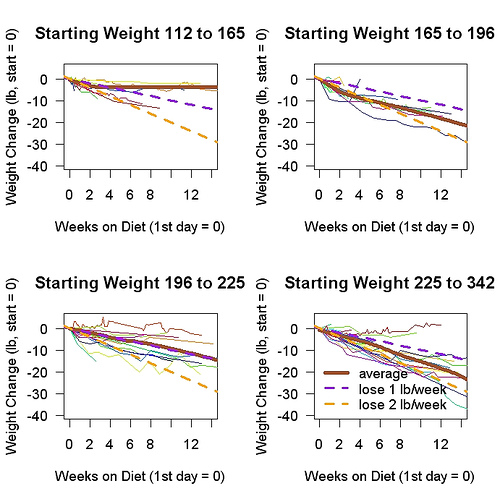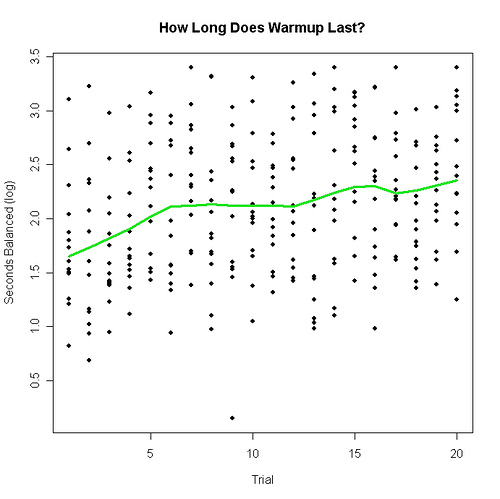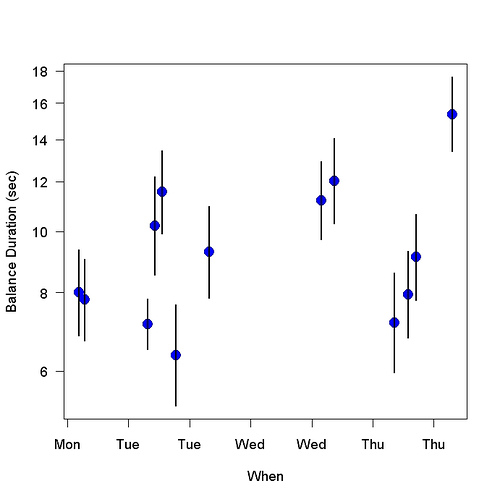I reduced the amount of omega-3 in my diet. I stopped taking flax-seed oil capsules (I had been taking 10 1000-mg capsules/day) and started drinking extra light olive oil (2 tablespoons/day) instead of walnut oil. I made the change at midnight: Tuesday high, Wednesday low. The graph below shows measurements of my balance.
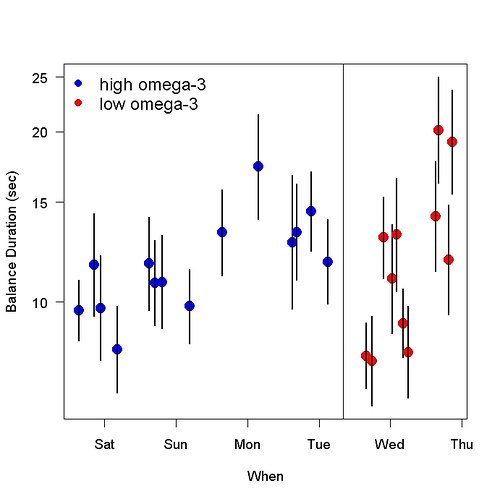
From Saturday through Tuesday, and preceding days, my intake of omega-3 was high; on Wednesday and Thursday it was low.
My balance was worse Wednesday morning than expected by extrapolation, which supports the idea I started with: omega-3 affects my balance. The time course of the change (the impairment was clear in hours) resembles the original observation: I could put on my shoes while standing much more easily the morning after the day I increased my omega-3 consumption.
But, as you can see, there was a problem: My balance rapidly improved during the low omega-3 condition. Although the results support my original idea, they don’t support it as strongly as they might. A comment on a previous post was “Aren’t you worried that your expectation of worse balance will skew the results?” No, I’m not I thought when I read it. I had several reasons for not worrying about the effect of expectations, and now another has come along: Surprising results, which imply that expectations have little effect. I did not expect significant improvement from practice. I had believed that because I balance everyday for hours while standing and walking, there would not be a large practice effect. I was wrong.
Psychologists don’t know much about motor learning. There are few well-established empirical generalizations about what makes motor learning faster or slower. Another gap in our knowledge is about the nature of the underlying change. When you get better with practice, how does your brain change?
After I shifted to low omega-3, I was surprised not only by how much I improved but also by how quickly. Was my improvement due simply to more tests? I plotted my scores versus test number:
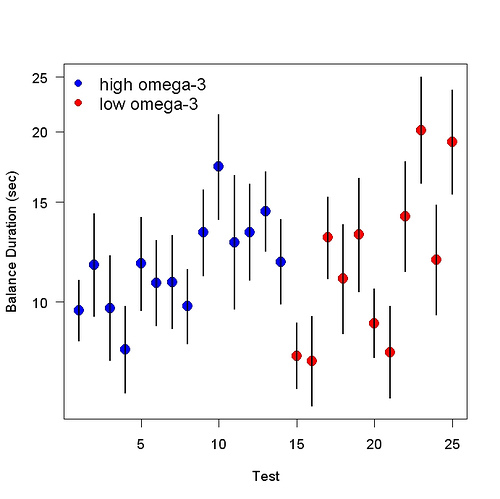
This graph suggests that I improved more per test (greater slope) during the low-omega-3 condition than during the high-omega-3 condition. I think it is a spacing effect: During the low-omega-3 condition, I tested more often. During the high-omega-3 condition, I did 14 tests in 3.5 days — 4.0/day. During the low-omega-3 condition, I did 11 tests in 1.2 days — 9.1/day. I tested more often because I wanted to track the decrease. I think this difference in test rate is the reason for the slope difference. This effect is the opposite of the usual spacing effect in learning experiments, in which close-together (”massed”) practice is less effective than widely-spaced practice.
Relevant to the theme of inspiration via self-experiment, these results and my experience gave me several new (at least to me) ideas about motor learning. One was the existence of this spacing effect. Another was that practice changes the brain by increasing how much of the brain is devoted to the task. (The areas used for other tasks shrink.) Practice increases accuracy because more neurons become involved. The output, the action, is an average from a larger sample. One reason I thought of this is that after lots of practice, and I became quite accurate, the circular area on which I was balancing seemed larger. The notion that the brain area used by the task gets larger helps explain the spacing effect. Spacing is important because the brain doesn’t care how often you have done something in the distant past; what matters is how often you are doing it now. Thus the spacing effect helps make efficient use of scarce resources (neurons). The spacing effect occurs because neural activity causes an increase in something (call it X) that slowly fades away. If later activity happens while X is above a threshold, neural rewiring occurs.
The big practice effects and the idea that practice is more powerful when more frequent should interest anyone who wants to improve their balance (and probably other motor skills), from athletes to the elderly. In a simple cheap easy safe way I got better quickly–too quickly, actually. What happened reminds me of Little League: My batting got much better when I started swinging a bat in my backyard.
The lesson for my experimental design is that I should reduce and keep more constant how often I test.
